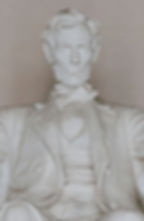
GOVERNMENT

United States Government
There is no long-lasting United States of America without a strong constitution binding the the states together for a commo purpose. The group called the "Federalists" believed in a strong central government. But the Americans had just thrown off a strong central power under the King of England. "Anti-Federalists" were leary of forming a govenment as harsh as the one they just delared independence from.
A constitution was necessary to bind them altogether in a strong national govenment but not so tightly that they couldn't breathe freely to enjoy the individual freedoms they demanded.
What to do...what to do? So the American leaders of the day, very educated and well versed in government formation, dug back into the history of many nations and borrowed from the best. They lifted philosphy from Greek and Latin texts, law from Scotland, Ireland and England, Rome and others and fashioned a constitution for their new county, The United States of America.
And just to make sure one part of government didn't get too much power the framers made sure that there were sufficient "checks and balances" to keep them in line. That was an enormous responsibility for the delegates representing 13 colonies to basically invent a brand new form of government - One that is not too strong and not too weak and one that can self-correct through the ages.
As Benjamin Franklin reportedly said to a woman who asked what the 2nd Constitutional Convention just formed he said "A republic if you can keep it." And the pressure and responsibility to do just that was then placed upon all Americans for generations to come. . That in essence is the purpose of this web site: Bounce Back
GOVERNMENT BRANCHES
The U.S. federal government is composed of three distinct branches: legislative, executive, and judicial. Powers of these three branches are defined and vested by the U.S. Constitution, which has been in continuous effect since May 4, 1789.

Legislative
This branch is made up of Congress (the Senate and House of Representatives) and special agencies and offices that provide support services to Congress.
The legislative branch’s roles include:
-
Drafting proposed laws
-
Confirming or rejecting presidential nominations for heads of federal agencies, federal judges, and the Supreme Court
-
Having the authority to declare war


